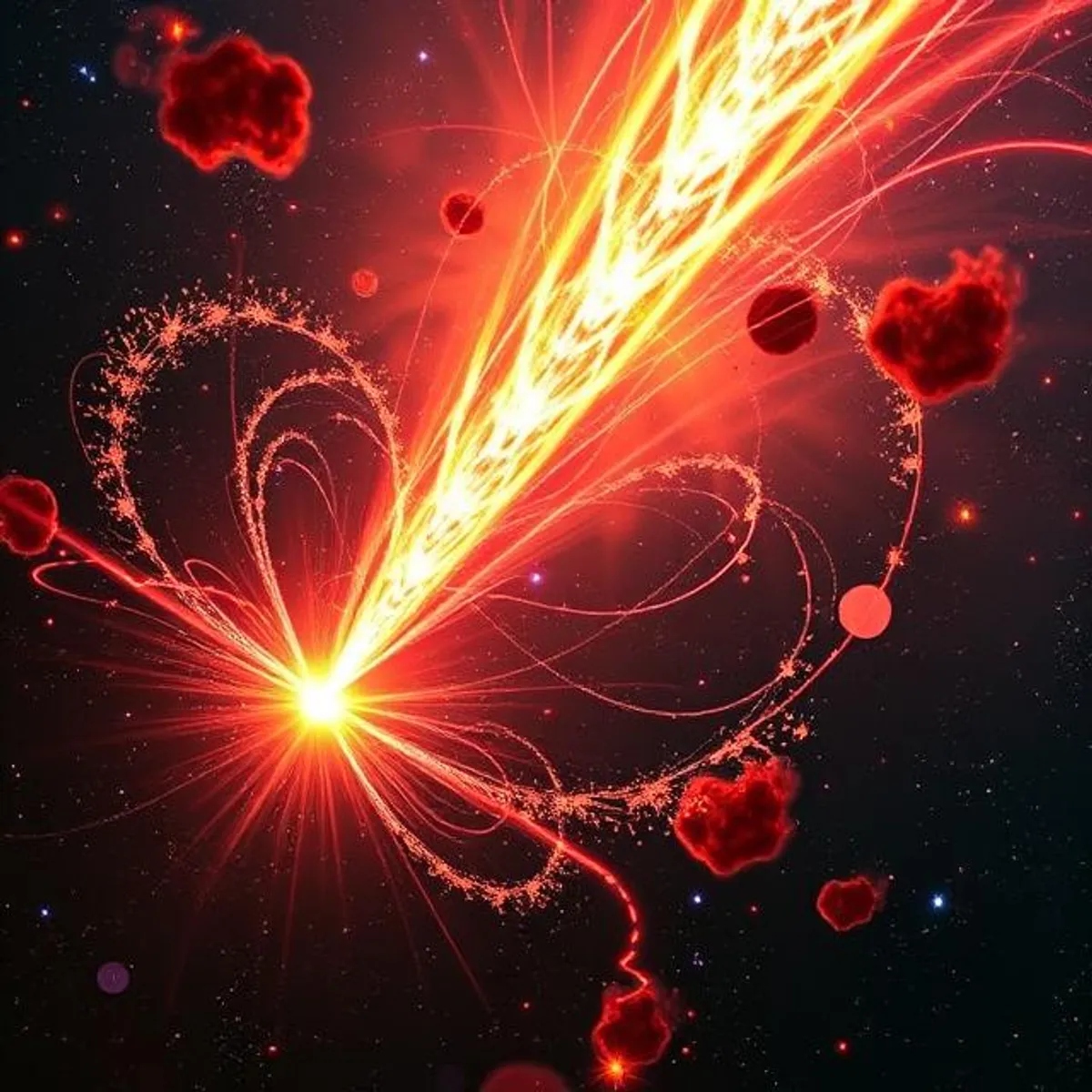Magnetic Reconnection in Magnetar-Driven Transients: Powering Cosmic Fireworks
Introduction
Magnetars, a rare class of neutron stars with magnetic fields trillions of times stronger than Earth’s, are cosmic powerhouses driving some of the universe’s most energetic transients, such as gamma-ray bursts and fast radio bursts. At the heart of these explosive events lies a fascinating process called magnetic reconnection. This phenomenon, though not widely known outside astrophysics circles, is key to understanding how magnetars unleash their immense energy. In this blog, we’ll dive into the physics of magnetic reconnection, its role in magnetar-driven transients, and why it captivates the small community of researchers studying these extreme objects.
What is Magnetic Reconnection?
Magnetic reconnection occurs when magnetic field lines in a plasma (a hot, ionized gas) rearrange, converting stored magnetic energy into kinetic energy, thermal energy, and particle acceleration. Picture two oppositely directed magnetic field lines being pushed together in a highly conductive plasma. When they get close enough, they “snap” and reconnect, releasing a burst of energy. This process is like a cosmic rubber band snapping, propelling particles and heating the surrounding plasma.
In the context of magnetars, magnetic reconnection happens in their ultra-strong magnetic fields, which can reach strengths of gauss (compared to Earth’s ~0.5 gauss). These fields are so intense that they twist, tangle, and store enormous amounts of energy, setting the stage for explosive transients.
Magnetars: The Cosmic Magnets
Magnetars are neutron stars—dense remnants of massive stars—with magnetic fields so powerful they dominate the star’s behavior. Unlike typical neutron stars, which emit steady pulses as pulsars, magnetars are known for sporadic, high-energy outbursts. These transients include:
- Gamma-ray bursts (GRBs): Intense flashes of gamma rays, often lasting seconds.
- Soft gamma repeaters (SGRs): Bursts of soft gamma rays, recurring unpredictably.
- Fast radio bursts (FRBs): Millisecond-long radio pulses, some linked to magnetars.
These events are powered by the magnetar’s magnetic field, and magnetic reconnection is the trigger that releases this energy.
The Role of Magnetic Reconnection in Transients
Magnetar magnetic fields are not static; they twist and shear due to the star’s internal dynamics, like a crust shifting or fluid motions in the core. These stresses build up until the field lines become unstable, leading to reconnection. Here’s how it drives transients:
-
Energy Release: When field lines reconnect, they release stored magnetic energy, accelerating particles to relativistic speeds and heating plasma to millions of degrees. This produces the high-energy photons seen in GRBs and SGRs.
-
Localized Flares: Reconnection often occurs in specific regions of the magnetosphere, creating localized “hot spots” that emit bursts of radiation. For example, the 2020 detection of an FRB from the magnetar SGR 1935+2154 was linked to a reconnection event.
-
Global Restructuring: In extreme cases, reconnection can trigger a large-scale reconfiguration of the magnetosphere, leading to giant flares—like the 2004 outburst from SGR 1806-20, which briefly outshone the entire galaxy in gamma rays.
Why It’s a Niche Topic
Magnetic reconnection in magnetar-driven transients is studied by a small group of astrophysicists—likely fewer than 1,000 worldwide—because it combines several complex fields:
- High-Energy Astrophysics: Understanding the extreme conditions of magnetars requires advanced knowledge of plasma physics and relativity.
- Numerical Simulations: Reconnection is modeled using sophisticated magnetohydrodynamic (MHD) simulations, which demand high computational expertise.
- Observational Challenges: Transients are unpredictable, and only a handful of magnetars (about 30 known) produce them, making data scarce.
Researchers in this field publish in journals like Astrophysical Journal or Monthly Notices of the Royal Astronomical Society, and discussions are often confined to specialized conferences like the American Astronomical Society meetings.
Recent Breakthroughs
Recent observations have shed light on this phenomenon:
-
In 2020, the CHIME and STARE2 telescopes detected an FRB from SGR 1935+2154, providing the first direct link between magnetars and FRBs. Models suggest a reconnection event in the magnetosphere triggered the burst.
-
Simulations using advanced MHD codes have shown how reconnection in twisted magnetic fields can produce the rapid energy release seen in giant flares.
-
X-ray and gamma-ray telescopes like NASA’s Swift and Fermi have captured detailed light curves of SGR outbursts, helping refine reconnection models.
These findings are exciting but limited to a small community due to the technical expertise required to interpret them.
Why It Matters
Understanding magnetic reconnection in magnetars has broader implications:
-
Cosmic Laboratories: Magnetars are natural laboratories for studying extreme physics, like quantum electrodynamics and ultra-strong magnetic fields.
-
Astrophysical Phenomena: Reconnection may explain other high-energy events, like solar flares or black hole jets, bridging magnetar research to wider astrophysics.
-
Technological Insights: Studying reconnection could improve our understanding of plasma physics, with applications in fusion energy research.
Conclusion
Magnetic reconnection in magnetar-driven transients is a window into the universe’s most extreme physics. It’s a process that transforms tangled magnetic fields into dazzling cosmic fireworks, from gamma-ray bursts to fast radio bursts. While it’s a niche topic known to a small group of dedicated researchers, its implications ripple across astrophysics, offering insights into the fundamental forces that shape our universe. If you’re intrigued, keep an eye on upcoming observations from telescopes like the James Webb Space Telescope or the Square Kilometre Array—they might just catch the next magnetar flare in action!
